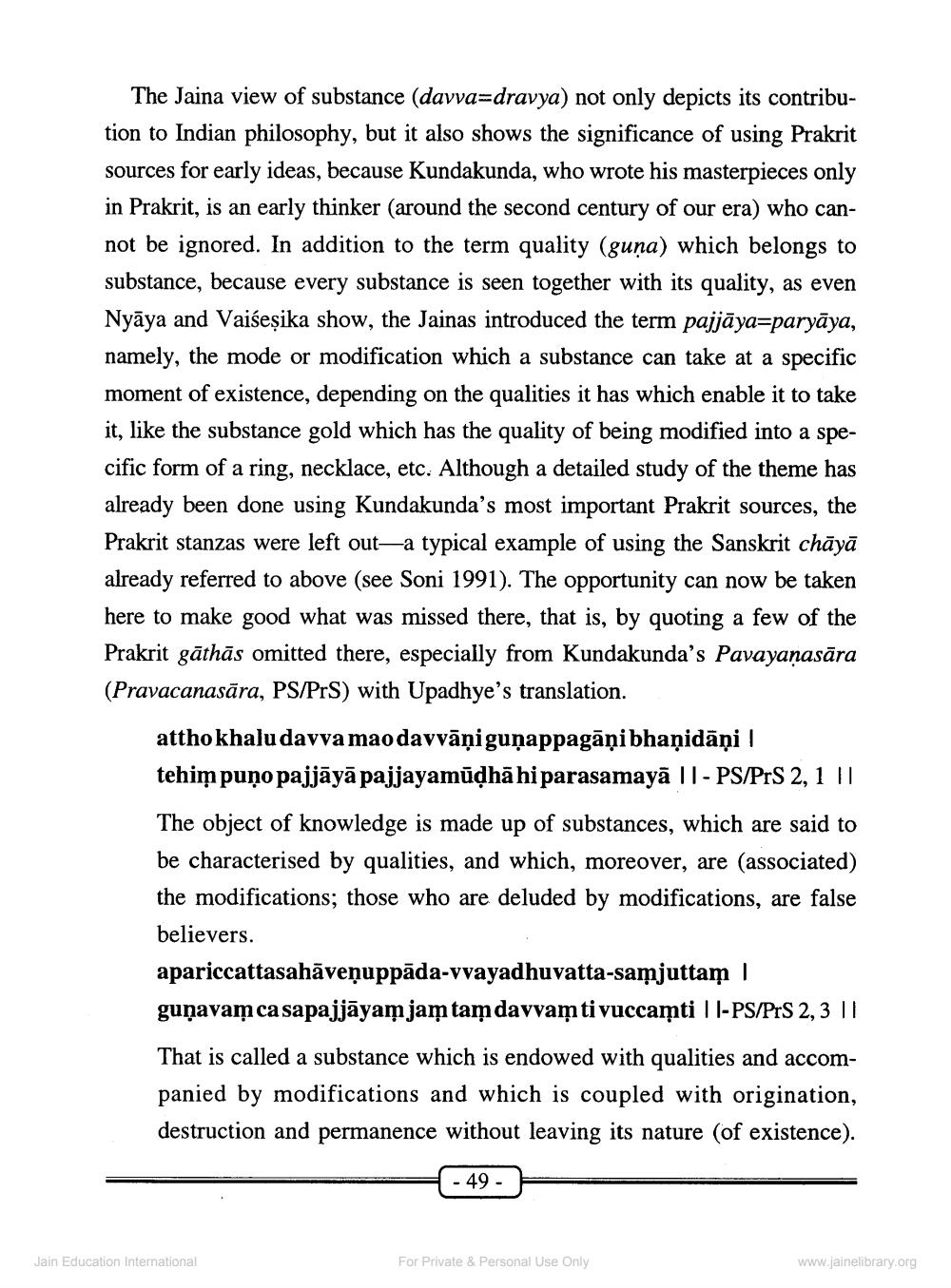________________
The Jaina view of substance (davva=dravya) not only depicts its contribution to Indian philosophy, but it also shows the significance of using Prakrit sources for early ideas, because Kundakunda, who wrote his masterpieces only in Prakrit, is an early thinker (around the second century of our era) who cannot be ignored. In addition to the term quality (guna) which belongs to substance, because every substance is seen together with its quality, as even Nyaya and Vaiseṣika show, the Jainas introduced the term pajjāya=paryāya, namely, the mode or modification which a substance can take at a specific moment of existence, depending on the qualities it has which enable it to take it, like the substance gold which has the quality of being modified into a specific form of a ring, necklace, etc. Although a detailed study of the theme has already been done using Kundakunda's most important Prakrit sources, the Prakrit stanzas were left out-a typical example of using the Sanskrit chāyā already referred to above (see Soni 1991). The opportunity can now be taken here to make good what was missed there, that is, by quoting a few of the Prakrit gāthās omitted there, especially from Kundakunda's Pavayaṇasāra (Pravacanasāra, PS/PrS) with Upadhye's translation.
attho khalu davva mao davvāņi guṇappagāni bhaṇidāņi | tehim puno pajjāyā pajjayamūḍhā hi parasamayā || - PS/PrS 2, 1 || The object of knowledge is made up of substances, which are said to be characterised by qualities, and which, moreover, are (associated) the modifications; those who are deluded by modifications, are false believers.
apariccattasahāveṇuppāda-vvayadhuvatta-samjuttam |
guṇavam ca sapajjāyam jam tam davvam ti vuccamti ||-PS/PrS 2, 3 || That is called a substance which is endowed with qualities and accompanied by modifications and which is coupled with origination, destruction and permanence without leaving its nature (of existence).
- 49 -
Jain Education International
For Private & Personal Use Only
www.jainelibrary.org




